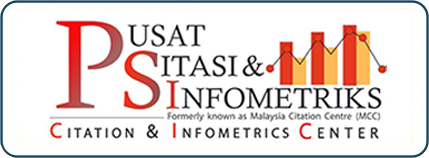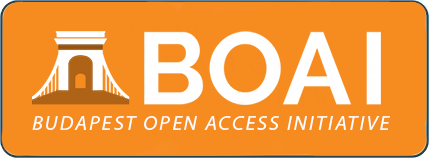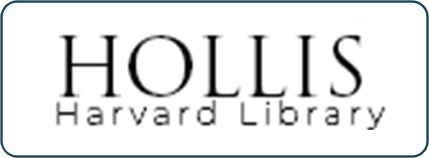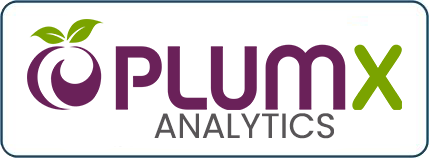Effects of Stewardship on Zakat Payers’ Trust in Kelantan: Does a Good Mix of Board Capital Increase Zakat Payers’ Trust Through Stakeholder Management?
DOI:
https://doi.org/10.33102/jmifr.v19i2.459Keywords:
Board capital, stakeholder management, zakat; zakat payers’ trust, zakat institution, SmartPLSAbstract
Due to the COVID-19 pandemic crisis, it is an urge to maximize the zakat collection to reduce citizens' burden who got laid off and lost income sources. Despite zakat's obligation to every eligible Muslim, the zakat collection is still considered unsatisfactory due to the leakage in the zakat collection. The leakage happens when zakat payers prefer to pay directly to asnafs. One cause of the leakage is a lack of trust in the zakat institution. There is a lack of previous literature that reported on determinants of zakat payers’ trust. Therefore, the objective of this paper is to explore the relationships between board capital, stakeholder management, and zakat payers’ trust and the mediating effect of stakeholder management on the link between board capital and zakat payers’ trust. Four hypotheses were derived for this paper. 553 responses were collected from zakat payers in Kelantan. The data was analyzed using SmartPLS and revealed that board capital and stakeholder management positively affects zakat payers’ trust. Furthermore, board capital positively impacts stakeholder management, and the mediating effect of stakeholder management is confirmed. These findings imply that a combination of board members and good stakeholder management does increase zakat payers' trust, thereby strengthening the function of zakat institutions as a socio-economic balancer.
Downloads
References
Abioye, M. M. O., Mohamad, M. H. S., & Adnan, M. A. (2011). Antecedents of zakat payers' trust: The case in Nigeria. International Journal of Economics, Management and Accounting, 19(3), 133-164. https://journals.iium.edu.my/enmjournal/index.php/enmj/article/view/204
Ahmad, I., & Ma’in, M. (2014). The efficiency of zakat collection and distribution: Evidence from two-stage analysis. Journal of Economic Cooperation and Development, 35(3), 133-170. https://www.semanticscholar.org/paper/The-Efficiency-of-Zakat-Collection-and-Evidence-Two-AhmadMa%E2%80%99in/b16fcbea46a4ab620fb1dd9b2e8cda294a8e072a
Ali, M. A. M., Tazilah, M. D. A. K., Shamsudin, A. I., Shukri, F. R. F., Adelin, N. M. F. A. N., & Zaman, W. M. S. W. Z. (2017). Factors that influence the zakat collection funds: A case in Kuantan. South East Asia Journal of Contemporary Business, Economics and Law, 13(1), 30-37. https://seajbel.com/wp-content/uploads/2017/09/ACC-107.pdf
Alim, M. N. (2015). Utilization and accounting of zakat for productive purposes in Indonesia: A review. Procedia Social and Behavioral Sciences, 211, 232-236. https://doi.org/10.1016/j.sbspro.2015.11.028
Aminuddin, A. F., Wahid, H., & Nor, M. A. M. (2017). Kecekapan pengurusan kewangan dan pengurusan agihan zakat: Kajian terhadap Majlis Agama Islam Johor. UMRAN International Journal of Islamic and Civilizational Studies, 4(3), 52-66. https://doi.org/10.11113/umran2017.4n3.163
Anderson, E. W., & Fornell, C. (2009). Foundations of the American Customer Satisfaction Index. Total Quality Management, 11(7), 869-882. https://doi.org/10.1080/09544120050135425
Arshad, R., Muda, R., & Nair, R. (2021). Towards a digitalized collaborative zakat management system for accelerating good governance practices in the new normal. The Journal of Muamalat and Islamic Finance Research, 18(2), 30-39. https://doi.org/10.33102/jmifr.v18i2.368
Aziz, M. R. A., & Anim, N. A. H. M. (2020). Trust towards zakat institutions among Muslims business owners. Jurnal Ekonomi & Keuangan Islam, 6(1), 1-9. https://doi.org/10.20885/JEKI.vol6.iss1.art1
Bagozzi, R. P., & Yi, Y. (1991). Multitrait-multimethod matrices in consumer research. Journal of Consumer Research, 17(4), 426-439. https://doi.org/10.1086/208568
Baron, R. M., & Kenny, D. A. (1986). The moderator-mediator variable distinction in social psychological research: Conceptual, strategic, and statistical considerations. Journal of Personality and Social Psychology, 51(6), 1173-1182. https://doi.org/10.1037//0022-3514.51.6.1173
Bashir, M. S., & Haji Ali, N. N. (2012). Analysis of zakat management in Brunei Darussalam. IJMS, 19(2), 75-102. https://e-journal.uum.edu.my/index.php/ijms/article/view/10373
Berman, S. L., Wicks, A. C., Kotha, S., & Jones, T. M. (1999). Does stakeholder orientation matter? The relationship between stakeholder management models and firm financial performance. Academy of Management Journal, 42(5), 488-506. https://doi.org/10.2307/256972
Chin, W. W. (1998). The partial least squares approach for structural equation modeling. In G. A. Marcoulides (Ed.), Modern methods for business research (pp. 295-336). Erlbaum Associates Publishers.
Chomeya, R. (2010). Quality of psychology test between Likert scale 5 and 6 points. Journal of Social Sciences, 6(3), 399-403. https://doi.org/10.3844/jssp.2010.399.403
Cohen, J. (1969). Statistical power analysis for the behavioral sciences. Academic Press.
Cohen, J. (1992). A power primer. Psychological Bulletin, 112(1), 155-159. https://doi.org/10.1037//0033-2909.112.1.155
De Oliveira, G. F., & Rabechini, R. J. (2019). Stakeholder management influence on trust in a project: A quantitative study. International Journal of Project Management, 37(1), 131-144. https://doi.org/10.1016/j.ijproman.2018.11.001
Donaldson, L., & Davis, J. H. (1991). Stewardship theory or agency theory: CEO governance and shareholder returns. Australian Journal of Management, 16(1), 49-65. https://doi.org/10.1177/031289629101600103
Economic Planning Unit. (2022, September 29). Household income, poverty and household expenditure. https://www.epu.gov.my/en/socio-economic-statistics/household-income-poverty-and-household-expenditure
Fornell, C., & Bookstein, F. L. (1982). Two structural equation models: LISREL and PLS applied to consumer exit-voice theory. Journal of Marketing Research, 19(4), 440-452. https://doi.org/10.2307/3151718
Fornell, C., & Cha, J. (1994). Partial least squares. In R. Bagozzi (Ed.), Advanced methods of marketing research (pp. 52-87). Blackwell Business.
Fornell, C., & Larcker, D. F. (1981). Evaluating structural equation models with unobservable variables and measurement error. Journal of Marketing Research, 18(1), 39-50. https://doi.org/10.2307/3151312
Gefen, D., Straub, D. W., & Boudreau, M.-C. (2000). Structural equation modeling and regression: Guidelines for research practice. Communication of the Association for Information Systems, 4(7), 1-79. https://doi.org/10.17705/1CAIS.00407
Ghani, E. K., Aziz, A. A., Tajularifin, S. M., & Samargandi, N. (2018). Effect of board of management and governmental model on zakat payers’ trust on zakat institutions. Global Journal Al-Thaqafah (GJAT), 8(73), 73-86. http://dx.doi.org/10.7187/GJATSI2018-05
Ghazali, M. Z., Saad, R. A. J., & Wahab, M. S. A. (2016). Proposing factors influencing trust towards zakat institutions amongst Moslem business owners. The European Proceedings of Social & Behavioural Sciences (EpSBS), 651-658. http://dx.doi.org/10.15405/epsbs.2016.08.92
Hair, J. F., Black, W. C., Babin, B. J., & Anderson, R. E. (2013). Multivariate data analysis (7th ed.). Pearson New International Edition.
Hair, J. F., Sarstedt, M., & Ringle, C. M. (2012). An assessment of the use of partial least squares structural equation modeling in marketing research. Journal of the Academy of Marketing Science, 40(3), 414-433. https://doi.org/10.1007/s11747-011-0261-6
Hasan, A., Hassan, R., Engku Ali, E. R. A., Engku Ali, E. M. T., Abduh, M., & Noordin, N. H. (2019). A proposed human resource management model for zakat institutions in Malaysia. ISRA International Journal of Islamic Finance, 11(1), 98-109. https://doi.org/10.1108/IJIF-10-2017-0036
Hassan, M. H., Wahid, H., & Ahmad, S. (2017). Keberkesanan agihan zakat perubatan oleh institusi zakat: Kajian Lembaga Zakat Selangor (LZS) dan Majlis Agama Islam Wilayah Persekutuan (MAIWP). Jurnal Pengurusan JAWHAR, 11(1), 1-24. http://e-penerbitan.jawhar.gov.my/Jurnal_JAWHAR/index02.html#book/5
Hornby, A. S. (2010). Stewardship. In J. Turnbull (Ed.), Oxford advanced learner’s dictionary of current English (pp. 1464). Oxford University Press.
Hulland, J. (1999). Use of Partial Least Squares (PLS) in strategic management research: A review of four recent studies. Strategic Management Journal, 20(2), 195-204. https://doi.org/10.1002/(SICI)1097-0266(199902)20:2%3C195::AID SMJ13%3E3.0.CO;2-7
Ismail, H., & Daud, M. N. (2017). Skim agihan zakat asnaf al-gharimin di institusi-institusi zakat di Malaysia. In Z. M. Musa, A. A. Rahman, & A. A. Wahab (Eds.), Memperkasa kutipan dan agihan zakat di Malaysia (pp. 11-20). Penerbit USIM.
Jabatan Perangkaan Malaysia. (2019). Retrieved from http://data.stats.gov.my/downloads
Keay, A. (2017). Stewardship theory: Is board accountability necessary? International Journal of Law and Management, 59(6), 1292-1314. https://doi.org/10.1108/IJLMA-11-2016-0118
Ko, Y. J., Rhee, Y. C., Kim, Y. K., & Kim, T. (2014). Perceived corporate social responsibility and donor behavior in college athletics: The mediating effects of trust and commitment. Sport Marketing Quarterly, 23(2), 73-82. https://link.gale.com/apps/doc/A378369217/AONE?u=anon~c2f8ccb3&sid=googleScholar&xid=41d32838
Majlis Agama Islam dan Adat Istiadat Melayu Kelantan (MAIK). (2017). Laporan tahunan Majlis Agama Islam dan Adat Istiadat Melayu Kelantan 2016. https://www.e-maik.my/v2/laporan-tahunan-maik
Malaymail. (2020, December 3). Nearly 100,000 lost jobs since January due to Covid-19, says deputy minister. https://www.malaymail.com/news/malaysia/2020/12/03/nearly-100000-workers-lost-jobs-due-to-covid-19-says-deputy-minister/1928475
Malaysiakini. (2020, March 25). ‘Rise up’: PM calls on charity groups, zakat centres to help needy. https://m.malaysiakini.com/news/516726
Muhammad, S. A., & Saad, R. A. J. (2016). The impact of public governance quality, accountability and effectiveness on intention to pay zakat: Moderating effect of trust on zakat institution. International Journal of Management Research & Review, 6(1), 1-8. http://ijmrr.com/index.aspx
Mustafa, M. O. A., Mohamad, M. H. S., & Adnan, M. A. (2013). Antecedents of zakat payers' trust in an emerging zakat sector: An exploratory study. Journal of Islamic Accounting and Business Research, 4(1), 4-25. https://doi.org/10.1108/17590811311314267
Nguyen, T. S., & Mohamed, S. (2021). Mediation effect of stakeholder management between stakeholder characteristics and project performance. Journal of Engineering, Project, and Production Management, 11(2), 102-117. https://link.gale.com/apps/doc/A671213891/AONE?u=anon~6219c71&sid=googleScholar&xid=fc0718d7
Nunally, J. C. (1978). Psychometric theory. McGraw-Hill.
Pfeffer, J., & Salancik, G. R. (1978). The external control of organizations: A resource dependence perspective. Harper and Row.
Pfeffer, J., & Salancik, G. R. (2003). The external control of organizations: A resource dependence perspective. Standford University Press.
Ringle, C., Wende, S., & Will, A. (2005). SmartPLS 2.0 (M3) Beta. University of Hamburg.
Samargandi, N., Tajularifin, S. M., Aziz, A. A., & Gunardi, A. (2018). Can disclosure practices and stakeholder management influence zakat payers’ trust? A Malaysian evidence. Business and Economic Horizons, 14(4), 882-893. http://dx.doi.org/10.22004/ag.econ.287235
Sawmar, A. A., & Mohammed, M. O. (2021). Enhancing zakat compliance through good governance: a conceptual framework. ISRA International Journal of Islamic Finance, 13(1), 136-154. https://doi.org/10.1108/IJIF-10-2018-0116
Schillemans, T., & Busuioc, M. (2014). Predicting public sector accountability: From agency drift to forum drift. Journal of Public Administration Research and Theory, 25(1), 191-215. https://doi.org/10.1093/jopart/muu024
Tajuddin, T. S., Aman, Z., & Ismail, S. (2014, May 26-27). Management accounting practices in non-profit religious organization: A case Study in Lembaga Zakat Selangor (LZS). Conference on Management and Muamalah (CoMM 2014) “Synergizing Knowledge on Management and Muamalah”. KUIS, Selangor, Malaysia.
Tarimin, M. (2012). Zakat al-mal al-mustafad amalan dan pengalaman di Malaysia. Pusat Pungutan Zakat.
Wahab, A. A., & Borhan, J. T. (2014). Faktor penentu pembayaran zakat oleh entiti perniagaan di Malaysia: Satu tinjauan teori. Jurnal Syariah, 22(3), 295-322. https://ejournal.um.edu.my/index.php/JS/article/view/7860
Zhao, X., Lynch, J. G., & Chen, Q. (2010). Reconsidering Baron and Kenny: Myth and truths about mediation analysis. Journal of Consumer Research, 37(2), 197-206. https://doi.org/10.1086/651257
















